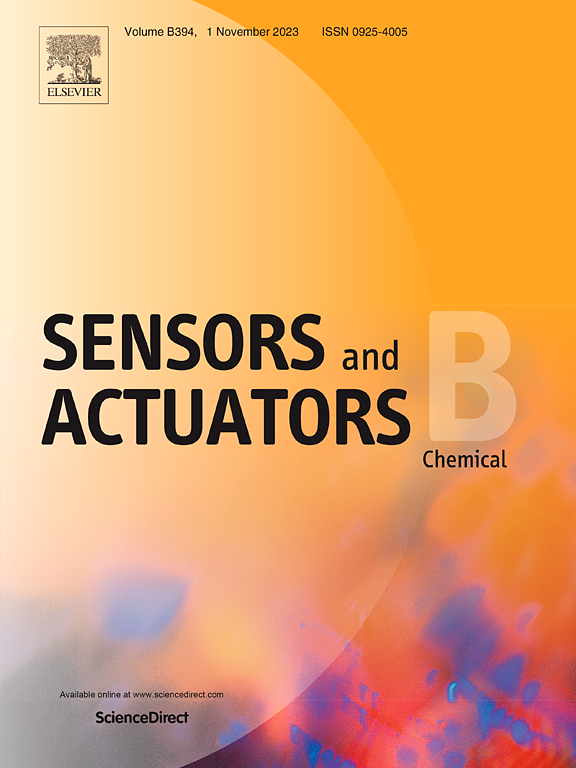G-Quadruplex/Hemin Self-Assembly Powered Homogeneous Electrochemical/Visual Sensor for Efficient and Reliable Detection of Ochratoxin A
IF 8
1区 化学
Q1 CHEMISTRY, ANALYTICAL
引用次数: 0
Abstract
Electrochemical (EC) aptasensors stand out in ochratoxin A (OTA) detection due to their rapid analysis capabilities. However, existing EC aptasensors rely on layer-by-layer assembly techniques for immobilization. Thus, developing a simple technique that can efficiently and accurately detect OTA remains a significant challenge. Herein, an homogeneous EC/visual sensor is developed to achieve an efficient and reliable detection of OTA. First, gold nanoparticles grown on mesoporous polydopamine nanoparticles (AuNPs@mPDA) serve as nanocontainers for hemin encapsulation. OTA aptamers and SH-complementary DNA (SH-cDNA) act as a “biogate” to encapsulate hemin. The presence of OTA can trigger the opening of the biogate, releasing hemin, which then self-assembles into G-quadruplex/hemin DNAzyme (GQH). GQH acts as the electron transfer mediator, generating an EC signal. Meanwhile, GQH catalyzes colorimetric substrates, and the resulting visual response can be rapidly assessed for OTA contamination using a portable colorimeter. Overall, this homogeneous strategy and dual-signal mode effectively circumvent the errors induced by environmental factors and the tedious electrode preparation, thereby significantly enhancing the efficiency and reliability of detection. The proposed homogeneous sensor can sensitively electrochemically detect OTA in the range from 1 pg/mL to 500 ng/mL via the EC method and visually within the range from 100 pg/mL to 500 ng/mL. Furthermore, this sensor has exhibited satisfactory performance in the detection of OTA in complex food matrices, highlighting its potential in food safety monitoring.高效可靠检测赭曲霉毒素A的g -四联/Hemin自组装供电均相电化学/视觉传感器
电化学(EC)感应传感器因其快速分析能力而在赭曲霉毒素A (OTA)检测中脱颖而出。然而,现有的EC传感器依赖于逐层组装技术来固定。因此,开发一种能够有效、准确地检测OTA的简单技术仍然是一个重大挑战。本文开发了一种均匀的EC/视觉传感器,以实现高效可靠的OTA检测。首先,在介孔聚多巴胺纳米颗粒(AuNPs@mPDA)上生长的金纳米颗粒作为血红蛋白包封的纳米容器。OTA适体和sh -互补DNA (SH-cDNA)作为“生物门”包裹血红蛋白。OTA的存在可以触发生物门的打开,释放血红蛋白,然后自组装成g -四联体/血红蛋白DNAzyme (GQH)。GQH作为电子传递介质,产生EC信号。同时,GQH催化比色底物,由此产生的视觉反应可以使用便携式比色仪快速评估OTA污染。总的来说,这种同质策略和双信号模式有效地规避了环境因素引起的误差和繁琐的电极制备,从而显著提高了检测的效率和可靠性。所提出的均质传感器可以通过EC方法在1 pg/mL至500 ng/mL范围内灵敏地电化学检测OTA,并在100 pg/mL至500 ng/mL范围内视觉检测OTA。此外,该传感器在复杂食品基质中的OTA检测中表现出令人满意的性能,突出了其在食品安全监测中的潜力。
本文章由计算机程序翻译,如有差异,请以英文原文为准。
求助全文
约1分钟内获得全文
求助全文
来源期刊

Sensors and Actuators B: Chemical
工程技术-电化学
CiteScore
14.60
自引率
11.90%
发文量
1776
审稿时长
3.2 months
期刊介绍:
Sensors & Actuators, B: Chemical is an international journal focused on the research and development of chemical transducers. It covers chemical sensors and biosensors, chemical actuators, and analytical microsystems. The journal is interdisciplinary, aiming to publish original works showcasing substantial advancements beyond the current state of the art in these fields, with practical applicability to solving meaningful analytical problems. Review articles are accepted by invitation from an Editor of the journal.
 求助内容:
求助内容: 应助结果提醒方式:
应助结果提醒方式:


